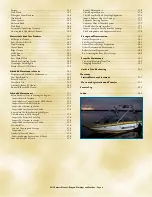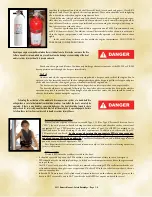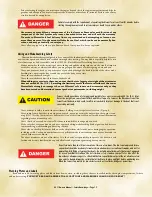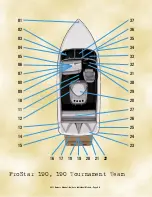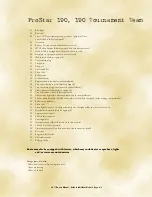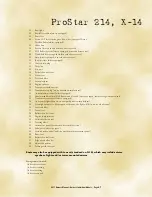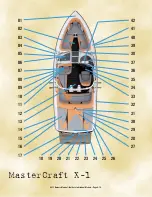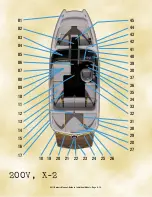
Just as there are rules that apply when driving a vehicle on the street, there are waterway rules that ap-
ply when you are driving a boat on the water. These rules are used internationally, and they are enforced by the
United States Coast Guard and local agencies. You should be aware of these rules and follow them whenever you
encounter another vessel on the water.
In various geographic locations, certain rules prevail that may be unique to the locale. Each state also has laws and
boating limitations that may be applicable only within their boundaries. It is the operator’s responsibility to seek out this
information and become familiar with all safety-related information, laws and rules governing boating operation.
The rules presented in this Owner’s Manual are condensed and have been provided for convenience only.
Consult your local U.S. Coast Guard Auxiliary (USCGA), Department of Motor Vehicles (DMV) or Department of
Natural Resources (DNR) for a complete set of rules governing the waters in which you will be using your boat.
If you plan to travel—even for a short trip—you would be well-served to contact the regional USCGA, DMV or
DNR in the area where you will be boating. Often, basic information is available through websites sponsored and
prepared by these organizations and governing bodies.
Steering and Sailing Rules/Sound Signals
Any time two (2) vessels on the water meet one another, one vessel has the right-of-way. It is called the
stand-on vessel. The vessel that does not have the right-of-way is called the give-way or burdened vessel.
These rules determine which vessel has the right of way, and accordingly, what each vessel should do.
The vessel with the right-of-way has the duty to continue its course and speed, except to avoid an immediate col-
lision. When you maintain your direction and speed, the other vessel will be able to determine how best to avoid you.
The vessel that does not have the right of way has the duty to take positive and timely action to stay out of
the way of the stand-on vessel. Normally, the give-way vessel should not cross in front of the stand-on vessel.
Slow down or change direction briefly and pass behind the other vessel. You should always move in such a way
that the stand-on operator can see what you are doing.
Rules When Encountering Vessels
There are three (3) main situations in which you may encounter other vessels, and you must avoid a colli-
sion. These are:
•
Meeting
(you are approaching another vessel head-on).
•
Crossing
(you are traveling across the other vessel’s path).
•
Overtaking
(you are passing or being passed by another vessel).
Meeting
If you are meeting another vessel head-on, and you are close enough to run the risk of collision, neither of
you has the right-of-way. Both of you should alter course to avoid an accident. You should keep the other vessel
on your port (left) side. (This rule doesn’t apply if both of you can clear each other by continuing your set course
and speed.)
Rules of the Open Water
2011 Owners Manual...Rules of the Open Water...Page 3-1
Содержание prostar 190 2011
Страница 26: ...Guide to Individual Models 2011 Owners Manual Guide to Individual Models Page 4 1...
Страница 81: ......
Страница 93: ......
Страница 105: ......


